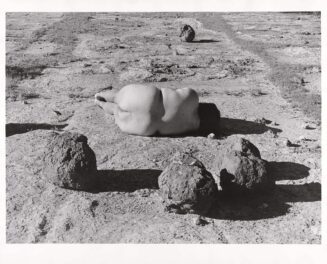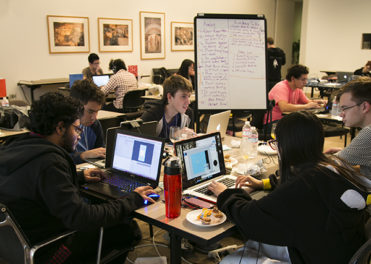
Pepperdine professor David Simonowitz (left), Getty Museum assistant curator of manuscripts Bryan Keene (center), and manuscripts staff assistant Morgan Conger (right) discuss the ninth-century Qur’an in the Museum’s Manuscripts Study Room.
David Simonowitz, a scholar of Islamic art and professor of Middle East Studies at Pepperdine University, has been visiting the Getty Museum for the last few months to study a ninth-century Qur’an made in North Africa, likely Tunisia, in the late 800s A.D. His analysis of the script, vowel and consonant markings, and decorative features of the gilded lettering has shed light on elements that have not been discussed in current scholarship. In addition, thanks to Professor Simonowitz’s transcription of the text, we will be updating the object metadata to enable searching by Surah in our online collection.
Some of the information revealed through this analysis will be presented at the Getty Center in 2018 in an exhibition organized by assistant curator of manuscripts Bryan C. Keene that reveals links between India, the Islamic world, and Europe in the visual culture of the Middle Ages. The Qur’an will be displayed within a section of the exhibition that explores how illuminated manuscripts connected readers to the divine or celestial realm by featuring the golden text of Surah 6:109–11, which discusses the signs and revelations from God (Allah) through the sacred words of the Qur’an and through angelic messengers.
Four folios from the Qur’an were on view last year in the exhibition Traversing the Globe through Illuminated Manuscripts. More information on the Qur’an, including selected downloadable images, is available via the Museum’s online collection.
See all posts in this series »





Comments on this post are now closed.